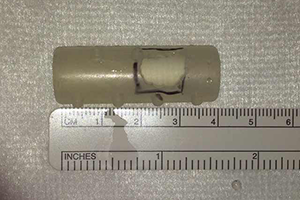Airway stents
Abstract
Stents and tubes to maintain the patency of the airways are commonly used for malignant obstruction and are occasionally employed in benign disease. Malignant airway obstruction usually results from direct involvement of bronchogenic carcinoma, or by extension of carcinomas occurring in the esophagus or the thyroid. External compression from lymph nodes or metastatic disease from other organs can also cause central airway obstruction. Most malignant airway lesions are surgically inoperable due to advanced disease stage and require multimodality palliation, including stent placement. As with any other medical device, stents have significantly evolved over the last 50 years and deserve an in-depth understanding of their true capabilities and complications. Not every silicone stent is created equal and the same holds for metallic stents. Herein, we present an overview of the topic as well as some of the more practical and controversial issues surrounding airway stents. We also try to dispel the myths surrounding stent removal and their supposed use only in central airways. At the end, we come to the long-held conclusion that stents should not be used as first line treatment of choice, but after ruling out the possibility of curative surgical resection or repair.
Cover






